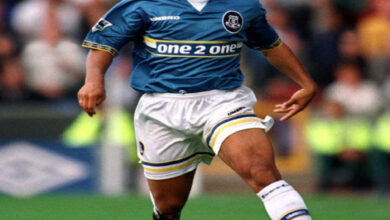Sophie Redgrave: Carrying Forward the Legacy of Excellence in Rowing
A Daughter of Sporting Royalty Building Her Own Path

Sophie Redgrave, the daughter of legendary British rower Sir Steve Redgrave, is a name that sparks curiosity and admiration. While her father’s legacy includes five consecutive Olympic gold medals and a place among the greatest Olympians in history, Sophie has been steadily carving out her own identity. With a background tied to one of Britain’s most respected sporting families, her journey offers a unique perspective on both the pressure and inspiration that come with carrying a world-famous surname. This article explores the remarkable achievements of Sir Steve Redgrave, the upbringing of Sophie within a sporting dynasty, and how she is shaping her own narrative in the world of rowing and beyond.
The Redgrave Legacy: A Foundation of Greatness
Sir Steve Redgrave is not just a household name in Britain but a global icon in the sport of rowing. His career spans five Olympic Games—1984, 1988, 1992, 1996, and 2000—earning gold medals in each. This remarkable feat cemented him as one of the greatest endurance athletes of all time. His ability to maintain peak performance across nearly two decades remains unmatched in Olympic history.
The Redgrave name does not stop with Steve alone. Lady Ann Redgrave, Sophie’s mother, is an accomplished Olympian herself, having competed in rowing before becoming a respected doctor and osteopath. Together, Steve and Ann cultivated a household where sports, discipline, and health played a central role. For Sophie and her siblings, this environment was both motivating and challenging, as expectations of excellence naturally surrounded them.
Growing Up as Sophie Redgrave
Being the child of one of Britain’s most decorated Olympians comes with its unique set of pressures. From an early age, Sophie Redgrave was exposed to the world of elite sports. The atmosphere around her family home included stories of international competitions, Olympic training regimens, and the unwavering determination that powered her father’s career.
Unlike her sister Natalie, who pursued both rowing and medicine, Sophie’s initial interests leaned more toward the arts and drama. Her parents often highlighted that while Natalie gravitated towards sport, Sophie expressed her creativity in other ways. This balance reflects the Redgrave family’s openness to allowing their children to find their own passions rather than being confined to rowing.
The Transition Into Rowing
Though Sophie was not initially considered a rower, she later found herself drawn into the sport. Exposure to rowing was inevitable given her family’s background, but it took time for her to discover her own rhythm on the water. For Sophie, the choice to explore rowing was not simply about living up to her father’s legacy—it was about finding her own connection with the sport.
The journey was not easy. Comparisons to her father were unavoidable, and the weight of expectations often loomed. However, Sophie’s approach has been markedly different. She has focused less on chasing records and more on enjoying the discipline, teamwork, and resilience that rowing demands. This mindset allows her to shape a story independent of her father’s towering achievements.
Challenges of Living in the Shadow of a Legend
One of the most fascinating aspects of Sophie Redgrave’s journey is the challenge of identity. When your father is Sir Steve Redgrave, a five-time Olympic champion, the world naturally wonders if you will follow in his footsteps. For Sophie, this question has never been about living up to someone else’s achievements but about creating her own path.
The expectations from media and sports enthusiasts have at times been overwhelming. Comparisons are inevitable, but Sophie has embraced them as part of her journey. Instead of feeling overshadowed, she uses her father’s success as inspiration while maintaining her individuality. This balance is critical in ensuring that her own achievements are recognized in their own right.
Sophie Redgrave and the Next Generation of Rowing
As Sophie continues her journey, she represents a new wave of British rowers who carry both heritage and ambition. Her path highlights the importance of resilience and self-definition. While she may not be chasing her father’s Olympic tally, her contributions to the sport demonstrate passion, dedication, and a love for rowing itself.
For the younger generation of athletes, Sophie embodies the idea that legacy can inspire without confining. She shows that children of legends do not have to replicate their parents’ careers but can instead find unique ways to contribute. In her case, rowing serves as both a personal challenge and a tribute to the values instilled in her by her family.
Beyond Rowing: Sophie’s Wider Interests
Sophie’s story is not just about rowing. From an early age, she displayed a keen interest in the arts, particularly drama. This duality of interests—sport and creativity—paints a picture of someone who is multi-dimensional. Unlike many athletes who dedicate their entire lives to training, Sophie balances sport with artistic expression.
Her broader interests serve as a reminder that being part of a sporting family does not define every aspect of a person. Sophie demonstrates that it is possible to celebrate a legendary legacy while also embracing individuality in different fields.
The Influence of Family Support
A key factor in Sophie Redgrave’s development has been the unwavering support of her family. Both Steve and Ann have emphasized that their children must find happiness in their own pursuits. Rather than pushing Sophie into rowing, they encouraged her to explore her passions. This philosophy allowed her to develop naturally and without undue pressure.
This family dynamic reflects a healthier approach to parenting in sporting dynasties. It ensures that children are not burdened by expectations but are instead empowered to choose their own paths. Sophie’s balanced growth as an athlete and artist is a direct reflection of this supportive environment.
Lessons from the Redgrave Family
Sophie Redgrave’s story highlights several key lessons:
Legacy is an inspiration, not a limitation – Children of great athletes can use family achievements as motivation without being confined to them.
Individuality matters – Finding one’s own identity is crucial, even in the shadow of greatness.
Balance is essential – Pursuing both sports and arts demonstrates the value of a well-rounded lifestyle.
Supportive environments create freedom – Parents who encourage exploration, rather than impose expectations, foster stronger, happier individuals.
These lessons extend beyond sports and apply to anyone navigating personal growth under the influence of a strong family legacy.
Sophie Redgrave’s Future
Looking ahead, Sophie Redgrave’s future remains full of possibilities. Whether she continues to deepen her connection with rowing or expands further into the arts, her journey is one of individuality and strength. Unlike her father, her career may not be defined by Olympic medals, but by her ability to navigate the complexities of legacy while forging her own narrative.
In doing so, Sophie represents a generation that values authenticity over imitation. Her contributions—whether within rowing or outside of it—are a testament to the enduring power of the Redgrave name while reminding the world that greatness can take many forms.
Conclusion
Sophie Redgrave stands at the intersection of heritage and individuality. As the daughter of Sir Steve Redgrave, she carries a surname synonymous with Olympic excellence. Yet, her journey is not about replicating her father’s career but about building her own story—one that blends rowing, creativity, and personal passion.
Her story serves as an inspiration to young athletes and individuals everywhere who live in the shadow of great legacies. It reminds us that success is not about comparison but about authenticity, resilience, and the courage to follow one’s path. As Sophie Redgrave continues to evolve, she adds a fresh chapter to the Redgrave legacy, proving that greatness is not inherited—it is created.



